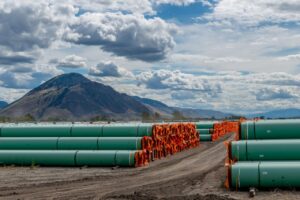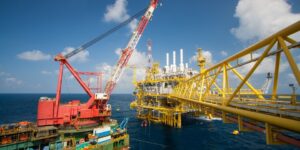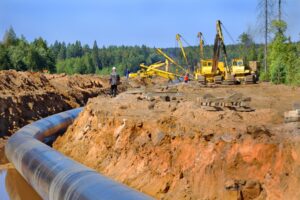
As the demand for energy, in particular, oil, continues to skyrocket to meet international market needs, reliable and efficient delivery systems, such as pipelines, must be maintained and protected against operation interruptions.
Currently, over two million kilometers of oil and gas pipelines are installed worldwide, with more than 85,000 km being planned or constructed.While many forms of transportation (ships, trucks, trains) are used to move energy products to marketplaces, pipelines remain the safest, most efficient and economical way to move these natural resources.
Disruption to this flow, therefore, costs industry millions of dollars every year, both in monetary and sometimes environmental or even human costs.Almost all oil and gas pipelines and pumping stations are unmanned; the main risks for these facilities are: construction activities near pipeline assets, tampering, and malicious activities such as unauthorized excavation or illegal tapping, and weather-related damages.
1.Sophisticated Cameras a must at Pumping Stations
Sophisticated and durable electronic security products are the No.1 priority for security installations at pipelines and pumping stations, as these sites are usually located in harsh environments made difficult by extreme outdoor weather conditions and/or the nature of the installation site.
In certain cases, the transfer of potentially flammable gases associated with the oil and gas industry puts the premises under volatile conditions.Gases could be coming from a vent, or form in a naturally occurring process in and around an oil facility.When ignited in volume, these could cause dramatic explosions.
The explosion-proof camera is specifically designed to operate in hazardous locations like these.It will not provide an ignition source for that flammable gas, even when it carries potentially high voltage electricity through it. The camera is certified to meet the rigorous and exacting European ATEX Directive 94 / 9 / EC, the guideline set by the European Commission to be followed by equipment intended for use in potentially explosive atmospheres. As perimeter security is key in protecting pumping stations, typically there is a series of explosion-proof PTZ cameras that are positioned inside the pumping station and looking out of the facility.
The most challenging environment is the marine environment. Because a lot of crude oil is transported in supertankers, some pipelines terminate at a port to allow crude oil to be pumped into the tanker. In these areas, corrosion can occur from salt air and high humidity in contact with certain metals; thus cameras installed are required to be manufactured from stainless steel and have higher than normal ingress protection, or IP rating. They also come with built-in wipers because cameras are usually positioned close from the piers, where they regularly receive a lot of salt water spray.

Some pumping stations are located in remote areas and cameras must not stop working as night falls.There are several night-vision camera technologies, but thermal cameras detect and pick up heat and can work under complete darkness. These cameras also enables users to see through a multitude of environmental conditions, including smoke, rain, snow, dust and dense fog.
At pumping stations, operators normally clear the ground and then build the stations.Groundbased radars that look for people and vehicles by scanning the ground detect objects or people approaching or intruding into the facility around the perimeter of the pumping station by using frequency modulate continuous wave (FMCW).Radars can then track the object and show on the radar screen the exact location of the object.
When the radar or the sensor at the fence detects an object and an alarm is sounded, the integrated PTZ camera or thermal camera is triggered to record.
2.Protecting with Detectors and Sensors
Air conditioners, generators and metalwork at unmanned pumping stations are sometimes stolen.To prevent this, a virtual perimeter is set up by placing cameras and external-quality detectors outside pumping stations. The detectors are usually mounted right beside the cameras and can actually mimic what the cameras see; whatever the detector is detecting will be captured by the cameras. An intruder climbing a perimeter fence trips the alarm detector and the surveillance cameras ‘grab’ three consecutive images of the alarm incident; these are usually one second apart.
The external-quality Passive Infra Red (PIR) detectors are designed for external use in harsh environments by employing the latest signal-processing and environmental adaptive circuitry to provide detection reliability while minimizing nuisance alarms. All the detectors are designed to operate in extreme environments, between -40°C to +40°C degrees. At these temperatures, they can still reliably detect a human being to discriminate all other environment effects.
Camera installations are more commonly seen in pumping stations than at pipeline installations because the distances associated with pipelines have made cameras expensive to deploy. But in many cases, in shorter pipelines, depending on the nature of the installation or its proximity to other areas, cameras might be considered cost-effective because of the threats involved. These could be in areas where you have frequent traffic, or where the pipeline is crossing a road.
The buried fiber optic cable used in pipelines for telecommunication purposes can also be used as sensing cable to detect the risks mentioned. To do that, it is only necessary to connect the communication cable with a sensing control unit.

The sensing control unit is also based on fiber optic technology. A laser beam is transmitted along the fiber optic cable. When any motion, sound or vibration accesses the fiber or the surround terrain, the wave pattern of the laser light is changed and detected using a proprietary, patented optical sensing technology. Then, the returned signal is automatically monitored and analyzed by the sensing control unit.
The system ensures highest detection rate while minimizing false alarm rate against external vibration such as train truck or weather storm. It also offers real time or early detection of attempted attacks or breakage to the pipeline. One sensing system can protect 40 km of pipeline.
3.Transmission at Remote Areas
Transmission plays a crucial role in sending data and images from remote unmanned sites. In land-based facilities like pipelines and pumping stations, fiber optic cabling is the most commonly used mode of transmission.
Pipelines are located in very remote areas. Here fiber optics is not just for security, but also for data communication purposes. The fiber optic cable links all infrastructure, such as pipelines, all block valves, and all pumping stations back to the main control room. There is also monitoring of the flow of the product in the pipeline. For installation of new pipeline a fiber optic cable is often installed along the entire length between the pipeline and ground surface. For existing pipe installations already using fiber optic, cabling can be used for the fiber optic sensing system.
Fiber optic transmission system can also be used to install the wide area video surveillance to protect the unmanned stations and to connect all technologies related to the pipeline operation such as SCADA, microwave & trucked radio, TETRA, fixed and wireless LAN, and Public Address.
In offshore applications, wireless is much more important, as well as satellite, and point-to-point wireless systems are often used either in conjunction or alone, depending upon the distance between the unmanned location and the monitoring facility. Historically, the high cost and limited bandwidth of satellite video transmission has made active unmanned surveillance difficult. However, product advances in wireless technology have made transmission over greater distances possible.
If someone tries to tamper the pipeline by digging through the fiber cable, the system should be able to operate on a separate, independent bandwidth. The system should be able to operate via satellite or GSM.A back-up transmission system must be able to switch on when one fails.
Pumping stations are located remotely. When security breaches take place and are detected by electronic security, security personnel may not be able to be dispatched at immediate notice. Although, in some remote areas military forces are tasked with responding to the surveillance systems that have generated a genuine alarm signal.
While video does play a role in combating oil theft and equipment, in an unmanned situation, video becomes a forensic tool used after the fact or in conjunction with other security solutions, such as audio, to discourage trespassers. This is where the use of video to identify persons, vessels and crimes forensically (after the crime) is important. You might not be able to catch them in the act, but you might prevent a second incident.
Adapted from a&s Magazine



































































